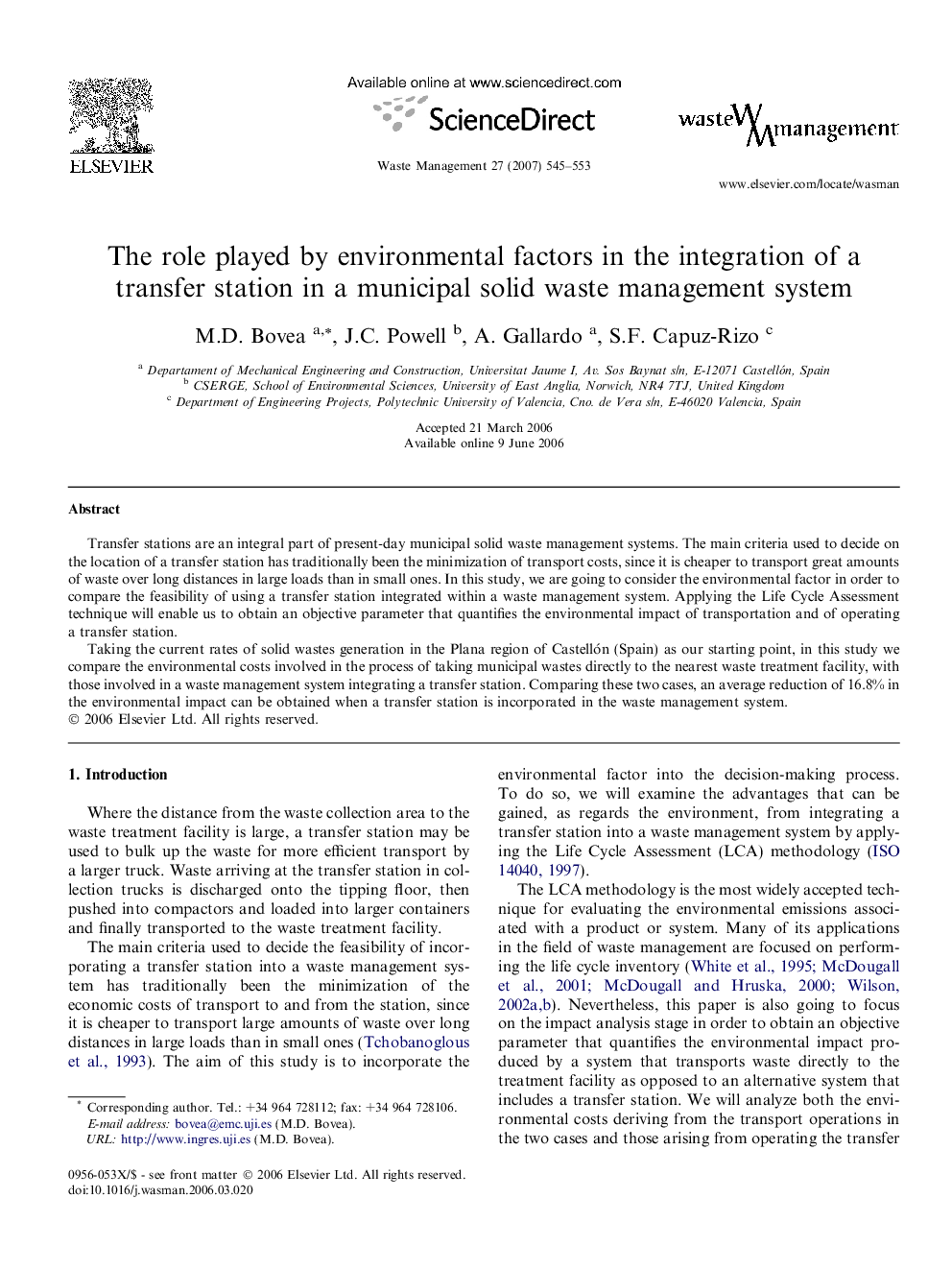| Article ID | Journal | Published Year | Pages | File Type |
|---|---|---|---|---|
| 4473603 | Waste Management | 2007 | 9 Pages |
Transfer stations are an integral part of present-day municipal solid waste management systems. The main criteria used to decide on the location of a transfer station has traditionally been the minimization of transport costs, since it is cheaper to transport great amounts of waste over long distances in large loads than in small ones. In this study, we are going to consider the environmental factor in order to compare the feasibility of using a transfer station integrated within a waste management system. Applying the Life Cycle Assessment technique will enable us to obtain an objective parameter that quantifies the environmental impact of transportation and of operating a transfer station.Taking the current rates of solid wastes generation in the Plana region of Castellón (Spain) as our starting point, in this study we compare the environmental costs involved in the process of taking municipal wastes directly to the nearest waste treatment facility, with those involved in a waste management system integrating a transfer station. Comparing these two cases, an average reduction of 16.8% in the environmental impact can be obtained when a transfer station is incorporated in the waste management system.
